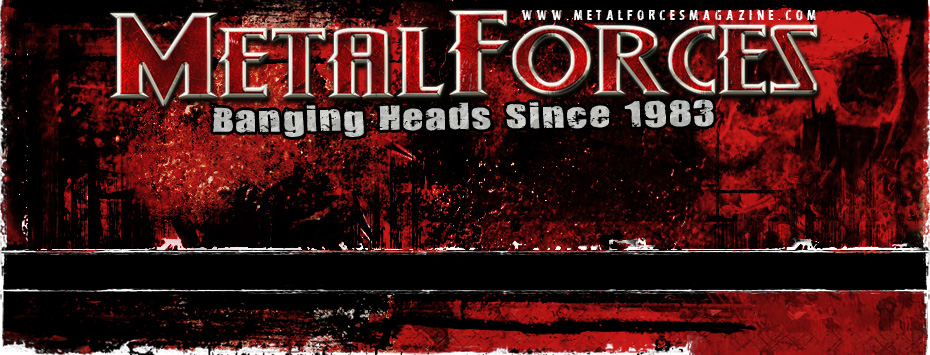
KORPIKLAANI – Predator’s Saliva
Anthony Morgan
August 2012
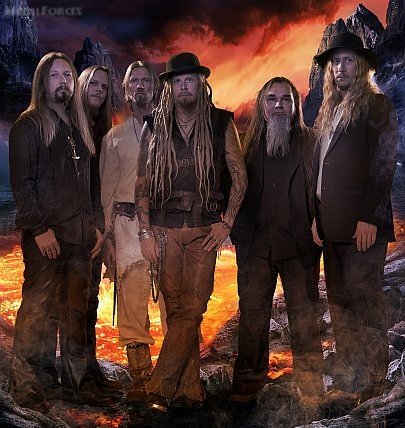
|
Lahti, Finland-based folk metal outfit Korpiklaani participated in the qualifying stages of the Eurovision Song Contest during 2011, hoping to emulate the success of fellow metal countrymen Lordi who won the event in 2006 with the track ‘Hard Rock Hallelujah’ (from March 2006’s The Arockalypse). Their resultant entry – a demo version of the composition ‘Metsälle’ sadly proved unsuccessful. However, the Finnish broadcasters of Eurovision wished to use the track to promote the competition.
“They wanted us to record ‘Metsälle’,” remembers bassist Jarkko Aaltonen. “This was in roughly September 2011, but we had studio time booked for January 2012 I think. We suddenly had to change the whole schedule to record ‘Metsälle’ in September. We entered the studio in September, and ended up recording drums for the entire album. We recorded all of the drums and one entire song in September, and then continued work in January. I think this is the longest time we’ve ever spent working on one album. Not that we worked the whole time, but the time from the beginning and end of recording was quite long. Other than that, it’s just a standard album for us; writing wise it was the same as usual. Jonne (Järvelä, vocals) writes most of the stuff, and then the other people write whatever they manage to create together. I think the only thing that changed was the actual recording.”
That very September in 2011 (on the 13th, to be precise), it was publicly announced that Korpiklaani had parted ways with longtime violinist Jaakko ‘Hittavainen’ Lemmetty. “Everything was becoming more and more difficult for him,” the musician reckons. “He didn’t really get into rehearsals anymore, and then when we were doing live shows he was playing less and less. He became less and less interested in doing anything, and then he started to miss shows. We felt that it would be better if he departed. When you’ve been together with someone for so long, it’s not a marriage but it’s close. It was quite difficult to bring up this subject, to say words that no-one wants to hear. ‘We have to part.’ I think everybody though, including him, was quite relieved that the issue was addressed. It was nothing personal; we had to do what we do. If you cannot do what you’re supposed to do or if you don’t want to do that, then you should stop being a musician.”
Teemu Eerola was initially revealed to have fulfilled the vacancy, but his tenure was ultimately brief. “There are certain bands in the world who if you read their biographies, you realise that it’s hell of a job to figure out who the hell was in the band at a certain time,” Jarkko muses. “If you think about Black Sabbath in the mid-80s, it’s hell of a job to figure out who the hell was in the band and who wasn’t. I’ve realised that we have been having the same situation during the last year – we’ve had five different violin players in the last year (laughs). The bigger audience only knows about three of those, which of course are Hittavainen, Teemu who was the permanent replacement after Hittavainen left, and then Tuomas (Rounakari) who’s now with us. Between these guys though we’ve done shows with other guys as well, friends of ours. It turned out that touring live was way too much for Teemu, so we finally found ourselves a permanent violin player though who was Tuomas. So far, it’s going quite nicely.”
The appointment of Tuomas Rounakari came to light on February 21st, 2012. “Not many people know this, but Hittavainen who was credited on the last two albums (February 2011’s Ukon Wacka and June 2009’s Karkelo) didn’t actually play,” the four-stringer divulges. “It was so difficult for him. He wasn’t feeling well, and he wasn’t interested. He was always on and off as a person. When he’s having a bad day, he can’t do anything. We’re not Def Leppard who can spend three years in the studio recording an album. We have a schedule, and we have to stick to that. We can only afford having a violin player in the studio for two weeks, so we need someone who we can actually trust.
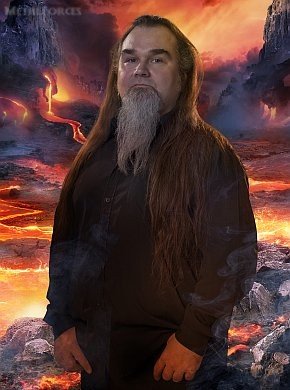
|
“Stylistically I don’t see a big difference between Hittavainen and our old session player, but Tuomas has bit of a different style. All these people are really nice violin players, but still I think Tuomas has more to his playing. I’m not sure if listeners – people who buy the album – can hear it the same way, but I feel that live it’s quite obvious that he has more to his playing, more than the others had.”
Korpiklaani’s eighth studio full-length – August 2012’s Manala – marks Tuomas Rounakari’s recording debut with the assortment. “The original idea that we had a long time ago was that we’d actually create an entire lyrical concept album based on the Kalevala, but then we sort of realised that it wasn’t going to be about Kalevala really,” Jarkko explains. “Most of the song lyrics are written by Tuomas Keskimäki. We shelved the idea of the concept album, but then a bit later on we realised that – especially when we dropped two of the songs that we had done for the album – ‘ey, wait a minute. Most of these songs are about the underworld, death, and all this – the mythological world of the dead.’ Most of the songs are about these common themes, but they’re not connected musically or lyrically. That’s why we decided to name the album Manala, but now everybody thinks that we decided to create a concept album about the world of the dead. That isn’t true, but anyway, this is how it is now.
“The album is named after Manala – also known as Tuonela – which is the Finnish world of the dead. It’s a place for the dead in Finnish mythology. There wasn’t the whole concept of Heaven and Hell – there was no Heaven or Hell. Everybody who died went to Manala; regardless of how they lived their life, everybody ended up in the same place. Those who did commit crimes or whatever they were called at the time possibly had some evil spirit following them all of the time, but that’s all it was. Finnish mythological stories say that it was possible to travel between the underworld and the regular world. For example, there’s a song on the album about how at a certain time of the day you can actually see the Bringer Of Death on Earth and that kind of thing. It’s a bit of a gloomy album in that sense lyrically, I think. It’s an interesting concept, I think.”
Manala isn’t a common lyrical thread throughout the outing. “With ‘Kunnia’ for example, it’s quite clear that it’s not about Manala,” the rhythmist clarifies. “It’s not about Manala but it is about death, so… Actually now that I think about it, I think the most interesting of those that are not about Manala is a song called ‘Ruuminmultaa’ which in English translates to ‘Soil Of The Corpse’. Again, that story is about death and dying. It’s not actually from Finnish mythology, but from Sami mythology from Lapland. It’s basically a story about when you make a deal with the Devil or whatever. Not the biblical Devil, but whoever it was.
“You go to the graveyard and get soil, and mix it with spirits or coffee. The person who drinks actually dies or goes insane, but you become wealthier. The problem is you have to keep doing that to people all of the time, otherwise you will end up the same way. It is a traditional story about making a deal with the Devil, and then of course there’s the next song ‘Petoeläimen Kuola’ which translates as ‘Predator’s Saliva’. The album doesn’t have any clear drinking songs this time. Everybody always expects us to have funny drinking songs, but this time we don’t. I think ‘Petoeläimen Kuola’ is the closest to a drinking song since it tells the story of the birth of beer.”
Popular numbers within Korpiklaani’s back catalogue include ‘Vodka’ (from Karkelo), and other tracks related to the subject of alcohol. The prospect of the group being consequently viewed as merely a comedy ensemble is a concern for Korpiklaani, however. “I’m surprised that you noticed,” Jarkko comments. “It is annoying, but there are so many people who judge the band by the song ‘Vodka’ or whatever. It annoys me and it annoys us, but then again we wrote those songs. We released those songs, so who the hell are we to complain? It will be interesting to see how this album is received since, as I said, there are no drinking songs on the album. The songs are way more serious, doomier, heavier, thrashier, so it will be sort of interesting to see if this will be more of a doom album because it has no drinking songs.”
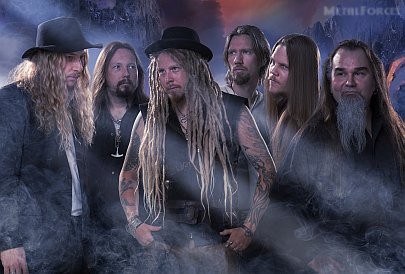
|
That isn’t to say future Korpiklaani albums will not include alcohol-related compositions, though. “You never know,” the performer stresses. “As I said earlier, we never think about these things beforehand. When we have enough songs that we think will make a good album, then we make an album. Maybe the next album will only have drinking songs. You never know what kinds of songs you’ll write.”
A slower affair compared to its fellow tunes, ‘Synkkä’ occupies track six. “It’s sort of interesting that people keep asking about that song in interviews, how we ended up doing that kind of a song on the album since we don’t usually do those,” Jarkko notes. “It is strange because as far as I can remember, we’ve always had songs like that. There have always been slower, moodier songs on every album, usually being the last track on the album. Maybe they only listen to the first half of the album. We’ve always had those, and I never felt there was anything strange in that song when we were recording that song. We’ve more or less always had these songs. One of the ideas is to sort of have this rhythm thing going, but we’ve used that before. It’s a track with simple lines, but together they all make the track quite nice.”
‘Synkkä’ provides Manala with a nice change of tempo. “You always have to think about the running order of the album,” the bassist observes. “If you want to point out for example that one song is really fast, then you put a slow, mellow song before that. We have five and a half minutes of slow paced, moody stuff, and then suddenly you have a faster track after that (‘Ievan Polkka’) which fits in quite nicely.”
Instrumental passages occupy tracks eight and nine in the shapes of ‘Husky Sledge’ and ‘Dolorous’. “‘Husky Sledge’ is based on this…,” Jarkko begins. “I never remember this… It is about some nation that disappeared somewhere in Siberia. While Tuomas was travelling he picked up this song, and then he arranged that there be a violin solo. I’m not sure if that song should be credited to him or the original singer (a Koryak shaman), because as far as I understand there’s not that much left of the original version. When writing the following track ‘Dolorous’ there was only one idea, and that was to create several melodies that would be the best, most beautiful melodies ever in the world of music. That is quite a task (laughs). I’m not sure if we managed to do that, but it’s still full of quite nice melodies.”
In authoring numbers, Korpiklaani have no premeditated intentions. “We write the songs, and then in the end we see what kind of an album we get from those songs,” the musician shares. “We have the demos, and then we start recording. Quite often during the recording, we get the feel of the album. Once you’re done with whatever album you’ve made… You can’t really say before the recording is done how the album is gonna sound. Before recording you feel ‘This is the best track. This is gonna be the killer track on the album,’ or ‘Okay, this is not going to be the best song but it’s a fucking good song.’ Then when you’ve finished the recordings you realise that things are the complete opposite, so you never know beforehand. We don’t even try to think of what we want to do beforehand.”
Critiquing Manala against predecessor Ukon Wacka, Jarkko hears musical variations. “When I heard the rough version of Ukon Wacka, I listened to the songs in the correct order and everything,” he recalls. “I got this sort of rock ’n’ roll feel from that, and that it defined what the hell this thing is called rock ’n’ roll. I feel that it had the same kind of… Like Motörhead albums. It doesn’t matter if the album’s from 1980 or 2010, because they always have this rock ’n’ roll feel to them. I had that same feeling about the previous album, and now with this new album I get this really, really thrash metal feel – totally different than the previous one. The previous one felt more relaxed, more rolling – as I said, rock ’n’ roll – and this one feels a lot thrashier. I don’t think it’s anything much different than the previous one, but that’s what I feel. It’s always different though for others who haven’t been playing or rehearsing those songs; they always hear them with fresh ears.”
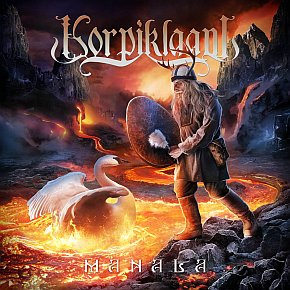
|
A limited edition version of Manala includes a bonus disc entitled Underworld, wholly consisting of English language renditions of Manala’s tracks. “The original idea came from the fact that everybody kept asking us,” the four-stringer discloses. “Not everybody, but mostly Americans. They kept bugging us about that, so we had the original idea to make a test. To release two albums the same day, the English version and the Finnish version, and see which sold more so we could tell the Americans to shut the fuck up. Then we realised that it was a shit idea, because that would basically force the people who wanted to buy our album to buy two albums. We decided to do it the way it is now. We recorded the Finnish version originally, and then we recorded the entire album in English and added those tracks as bonus tracks on the standard release. This way, everybody gets what they want. Some people get the Finnish version as well as a really, really cheap bonus album. That’s what we ended up doing. If we had known how much work it would take to actually translate the lyrics and make them singable, then we probably wouldn’t have done it. That was a shitload of work.”
Korpiklaani hasn’t set a precedent then? “I’m fairly sure that we haven’t,” Jarkko confirms. “I cannot say that I’m a 100% sure, but I’m fairly sure.”
A track’s chosen language somewhat dictates the mood of the number. “It changes it a lot,” the rhythmist agrees. “The English versions are completely different to my ears. The songs are meant to be sung in Finnish – that’s how they’re supposed to be. There’s so much more power in the vocals in the Finnish language versions. You don’t even have to understand the language, because you can still hear the difference.”
Finnish artist Jan Yrlund designed Manala’s cover artwork. “It is basically a depiction of Manala, the world of the dead,” Jarkko informs. “There’s burning rock and lava, fire and brimstone. You have – as you said – the Grandfather, who is one of the main characters in Kalevala. The Swan Of Tuonela is swimming in the river of Tuoni. It was a mythological bird that for example in Kalevala Lemminkäinen was instructed to kill. Honestly, I don’t remember why, but Lemminkäinen drowns.”
A mere 18-month gap separated the releases of Ukon Wacka and Manala, not exactly an uncommon occurrence for Korpiklaani. Whether a greater length of time will lapse between future releases is uncertain. “Of course I can see that happening, but I’m not sure if it will happen,” the performer reasons. “We’ve never had any tight schedule saying ‘We have to do this’ or ‘We have to do that.’ We’ve been recording albums when we’ve had songs for an album. So far, we’ve had this productive period of ten years. Maybe it will slow down, maybe it will not – you never know.
“We don’t think that we have to make an album every year, but so far it’s pretty much been like that anyway. I think there was also one year where we weren’t making an album a couple of years ago, but that didn’t matter. I think the previous year we released two, so that covered it. We’ve had times where we’ve released two albums in a year, and the only reason for that was we were changing record labels. The previous record label was postponing the release of the last album, so they released the album roughly a year after we had delivered the master to them. Then we had already recorded the next album and they still hadn’t released our previous album, but these things happen to other bands as well.”
Manala was released on August 3rd, 2012 in Europe and on the 14th in North America, all through Nuclear Blast Records.
Interview published in August 2012. All promotional photographs by Harri Hinkka.
